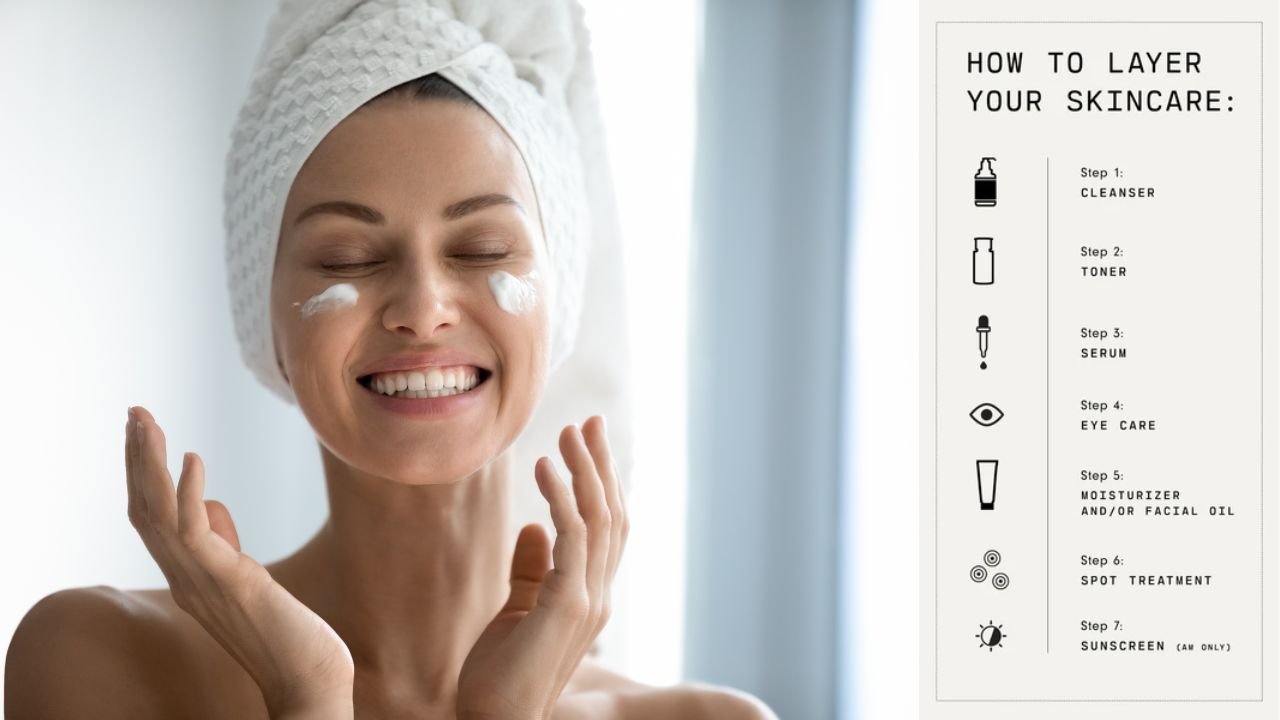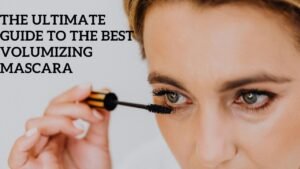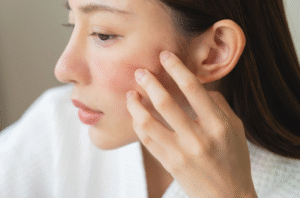Correctly layering skincare will change your regimen and increase its efficacy and fit for your particular skin type. Skincare science has changed; using products in the correct sequence guarantees they absorb better and provide best effects. In this article, we will explain How to Layer Skincare in 2024: The Complete Guide
Why is Layering Important?
From cleaning and hydration to protection and treatment, every skincare product has a certain purpose. Some products may neutralize one another or the skin may not efficiently absorb the actives if stacked wrong-wise.
7 ways that how to Layer Skincare
Cleanser
Cleansing is the first action to remove grime, sebum, and impurities. Choose a mild, hydrating cleanser in the morning and, if wearing makeup, opt for a double-cleanse at night to ensure a clean slate for your skincare regimen.
Key ingredients: Dry skin may be hydrated and moistened using a cleanser with ceramides, glycerin, hyaluronic acid, or aloe vera. Goldman advises also seeking niacinamide, green tea extract, or chamomile to calm skin without stripping or over-moisturizing. Other components like tea tree oil, glycolic acid, salicylic acid, benzoyl peroxide help manage extra oil, clear pores, and reduce acne breakthroughs.
Toner or Essence
A toner preps the skin for following treatments by restoring pH balance and eliminating any leftover pollutants. Hydrating essences give a surge of hydration, which is vital for all skin types. Apply with a cotton pad or palms and push gently into the skin.
Key ingredients: Choose to moisturize hyaluronic acid or rose water toners if you have dry or sensitive skin, suggested Goldman. Oily and acne-prone skin types may choose toners with astringent properties—ingredients that eliminate excess oil—like salicylic acid or witch hazel.
Serums
Serums are filled with active compounds addressing particular issues, such vitamin C for brightening or hyaluronic acid for moisture. Water-based serums come first since they absorb fast, while oil-based serums should be added subsequently to help lock in moisture. If using numerous serums, layer from the lightest to the thickest consistency.
Key ingredients: Vitamin C helps lighten skin, erase wrinkles, and reduce hyperpigmentation Niacinimide assist smooth fine wrinkles, minimize acne, shrink pores, control oil production, and brighten skin. Vitamin E, hyaluronic acid, peptides, ceramides, and glycerin help hydrate and seal in moisture.

Eye Cream
Eye cream is created particularly for the sensitive skin around the eyes, which tends to age quicker. Using a different product here helps treat fine wrinkles, puffiness, and dark circles. Apply a tiny quantity using your ring finger to prevent straining at this delicate region.
Key ingredients: “For day creams, look for ingredients like peptides, antioxidants (such as vitamin C or green tea extract), and SPF to protect against sun damage,” added Goldman. “Night creams can benefit from ingredients like retinol, niacinamide, or hyaluronic acid to promote repair and hydration.”
Moisturizer
Moisturizer is vital to seal in the hydration and prevent water loss. For midday, aim for a lightweight product, particularly if you have oily skin. In the evening, heavier creams work nicely for extra moisture. Moisturizers work as a sealant, boosting the efficiency of the previously applied treatments.
Key ingredients: “People with dry skin should look for moisturizers with ingredients like ceramides, glycerin, or shea butter for intense hydration,” advised Goldman. “Oily or acne-prone skin types can benefit from oil-free, non-comedogenic moisturizers with ingredients such as hyaluronic acid or lightweight gel formulations.”
Facial Oils (Optional)
Facial oils are best applied last (excluding sunscreen in the morning) to seal in moisture. Oils provide a barrier that stops water from leaving and may give your skin a natural shine.
Key ingredients: Face oils strong in fatty acids like argan, coconut, or avocado oil may help nourish and moisturize skin, added Goldman. He also offers chamomile and rosehip oil to help calm sensitive skin, while lighter oils like jojoba and grapeseed oil may help control oil production.
Sunscreen (Daytime Only)
Sunscreen is crucial for protecting your skin from UV damage. Apply a broad-spectrum SPF of at least 30 as the last step in your daily regimen to guarantee it can adequately defend your skin from dangerous rays.
How to: Gently apply sunscreen over your face, neck, chest, and ears. You should wear around 2 milligrams of sunscreen per square centimeter of skin—roughly a nickel-sized dose of sunscreen.18 Chemical sunscreens take roughly 15 minutes to absorb, but mineral sunscreens act instantly. For both, you should reapply every 2 hours.
Nighttime Final Step: Retinoids or Heavy Creams
If taking retinoids or other actives at night, they should be used after serum but before moisturizer, depending on the formula’s thickness. Retinoids should be taken sparingly as your skin acquires tolerance, making them most effective without irritation.
Focus on restoring the damage done throughout the day, using heavier products at night. This is also the time to utilize anything that renders skin sensitive to sunlight, including manual exfoliants and chemical peels.

Pro Tips for Effective Skincare Layering
- Listen to Your Skin: If you’re employing actives like acids or retinoids, progressively build up tolerance. Start with lesser amounts and apply every other night.
- Consider Product Compatibility: Some substances, such as vitamin C and niacinamide, may be irritating when taken together. It’s generally suggested to use them on alternate days or verify with a skincare professional.
- Be Consistent: Consistency is essential for skincare. Results may take weeks or months, especially with treatments that target anti-aging or pigmentation.
A Simple Overview
Layering your skincare in the precise sequence ensures your pricy products and much-needed treatments function their best. A good idea is to always apply your skincare from thinnest to thickest consistency to assist all your products absorb.
At a minimum, your skincare regimen should include cleaning, moisturizer, and sunscreen. If you need more assistance addressing acne, fine wrinkles, or other skin troubles, opt for a spot treatment, serum, and retinol. Consult with your dermatologist if you need assistance selecting the optimum active ingredients and products for your skin type.
FAQs
Cleanse, tone, apply serums, use eye cream, moisturize, and finish with sunscreen during the day.
The 7-layer skincare method includes putting numerous layers of hydrating toner or essence to improve moisture absorption and produce a glowing, healthy face. This process usually comprises patting seven thin layers of toner into the skin, letting each layer to soak before adding the next.
The right skincare pattern follows the sequence of product consistency: from the lightest to hardest textures. Start with water-based products like toners and serums, followed by creams and oils, which have heavier consistencies. Finish with sunscreen throughout the day to preserve your skin from environmental harm. This arrangement enables adequate absorption and maximal product efficacy.
Hyaluronic acid should typically be administered before vitamin C. Since hyaluronic acid is a humectant, it draws moisture and preps the skin to better absorb other substances. Vitamin C may then be administered to give antioxidant protection. This stacking arrangement ensures both products perform properly without affecting each other.











